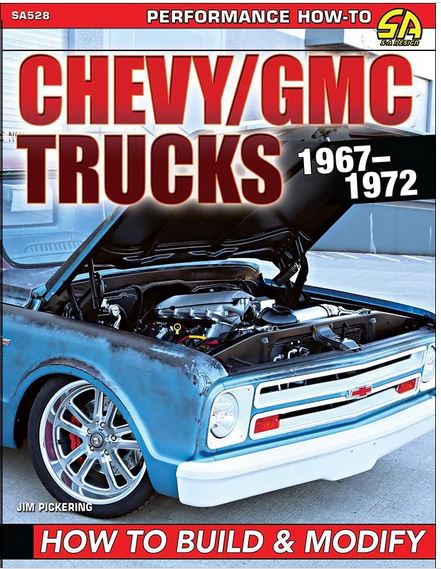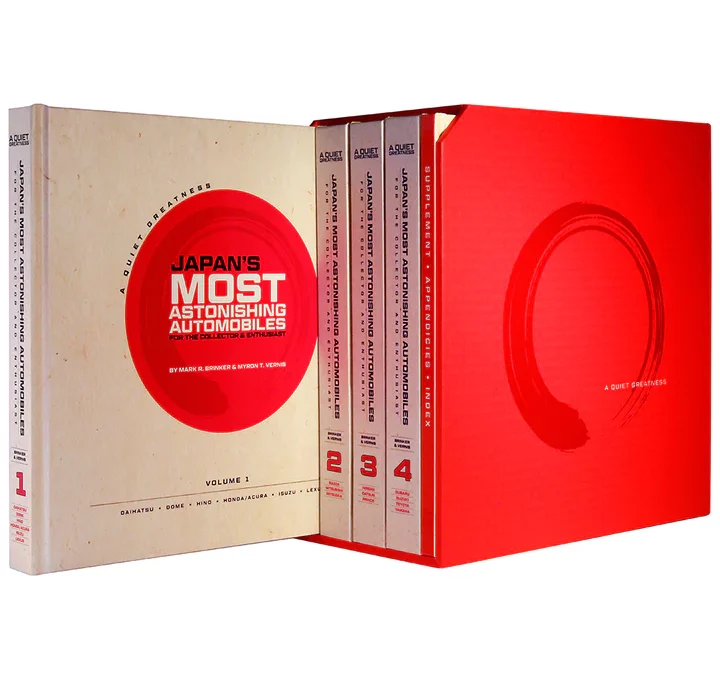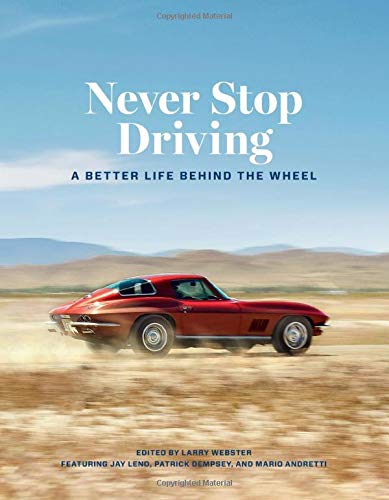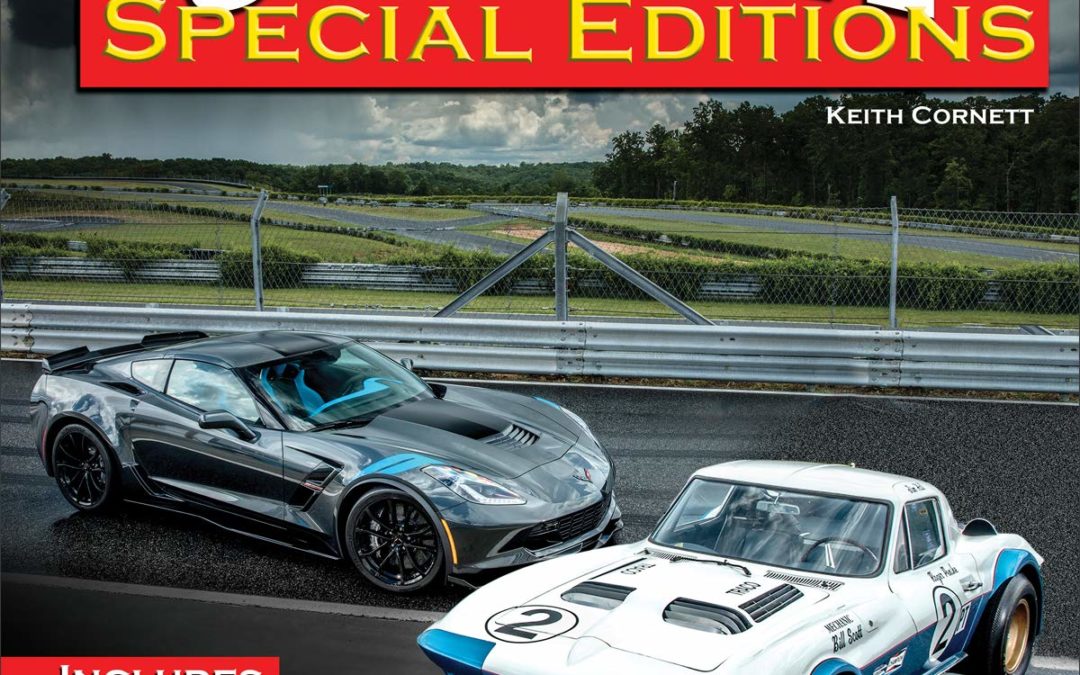
When the first Corvette was introduced to the public through the traveling caravan known as Motorama, everyone knew there was something special about it. Each subsequent model continued to strengthen that position. But how do you upgrade America’s favorite sports car? Make it a special edition!
Special edition Corvettes are the tip of the spear when it comes to the American auto manufacturers’ special models. Luminous cars such as the 1967 L88 convertible, 1969 aluminum block ZL1, and 2015 Z06 #001 have all commanded a million dollars or more. Modern dealer-tuned cars from Lingenfelter, Callaway, and Hennessey have carried the tradition of making a great Corvette even better. Extremely low mileage on 1978 Pace Cars indicate that people have thought of these cars as investments for nearly 40 years.
Keith Cornett of Corvetteblogger.com compiles a murderer’s row of special-edition Corvettes in this first-ever compilation on the subject. This book is an encyclopedia of information, as you will learn about some of the rarest Corvettes on the planet. It will serve as a guide if you’re looking to add one of these special machines to your collection. Everything you’ve ever wanted to learn about collectible Corvettes is in Corvette Special Editions.
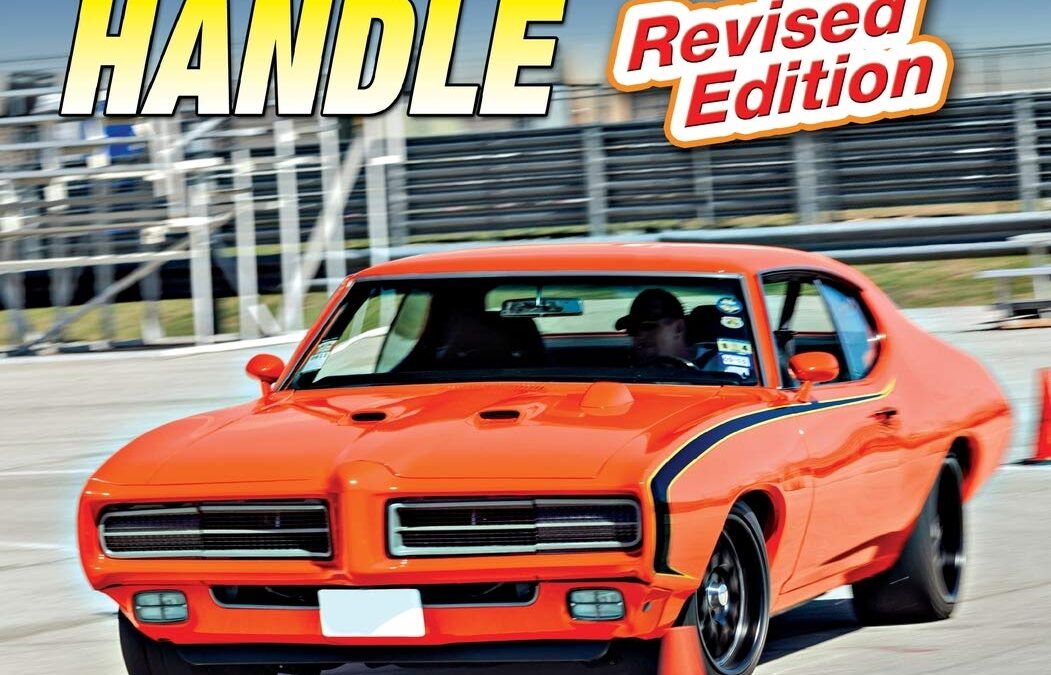
When automotive manufacturers stuffed large V-8 engines into intermediate-size cars, the American muscle car was born. Built from 1964 on, the vast majority of these amazingly fast machines did not carry cutting-edge chassis and suspension systems, and now these cars are up to 50 years old. Today, owners do not have to settle for poor handling and ride quality.
Muscle car and suspension expert Mark Savitske has built his business, Savitske Classic and Custom, on making muscle cars handle and ride at their best. With this updated edition, Savitske shows you what it takes to transform the handling of these high-horsepower machines. He explains the front and rear suspension geometry so you understand how it functions, and in turn, you realize how to get the most from a particular system. He also reveals the important aspects of spring rates, shock dampening, and ride height so you select the best spring and shock package for your car and application. He discusses popular high-performance tubular suspension arms and sway bars, so you can find the right combination of performance and adjustability. The suspension system has to operate as an integrated part of the car, so you’re shown how to select best suspension package for a well-balanced and responsive car. He also discusses how to extract maximum performance from popular GM, Ford, and Mopar muscle cars.
You can harness the performance potential of your muscle car and put much more power to the ground with critical chassis and suspension updates and products. A muscle car that carries modern suspension technology not only provides far better handling and ride comfort, but it is also much safer. How to Make Your Muscle Car Handle is the essential guide to unlocking the handling and performance potential of your muscle car. If you yearn for better handling, comfort, and performance for your muscle car, this is the book for you.

They say nobody walks in LA, but with LA Scavenger in hand you’ll ditch the car and discover Los Angeles’s hidden treasures that you’d otherwise zip past. This fun and interactive scavenger hunt will help you see the city in a completely new way as you walk or roll to locate under-the-radar and iconic landmarks. Set off on an exciting journey to uncover over 300 locations in neighborhoods all over LA and neighboring cities. You’ll use photos and rhyming clues to find eclectic public art, unique architecture, iconic restaurants, and other often-overlooked sights. Explore secret gardens, hidden staircases, and historic cemeteries where LA’s famous and forgotten names are buried. Find a charming shop that’s been making mochi for over 100 years and a Jewish deli full of rock history and pastrami. You’ll also visit a storied hotel that hosted the first Academy Awards ceremony, a Victorian mansion that became a clubhouse for magicians, and an Art Deco sculpture that guards a lake. Even if you’re familiar with some of the locations, the poetic clues will reveal fascinating trivia and give you a fresh perspective on the neighborhood. Food and travel writer Danny Jensen brings his love for Los Angeles and enthusiasm for exploring hidden histories and secret places to this unique guidebook. With this one-of-a-kind scavenger hunt, you can team up with your family, challenge your friends, or solve the clues on your own to test your knowledge of the city. Perfect for both visitors and longtime Angelenos, LA Scavenger will help you explore new neighborhoods, look at familiar locations in new ways, and train your eye to find the tiny details that tell a larger story. Enjoy the adventure!
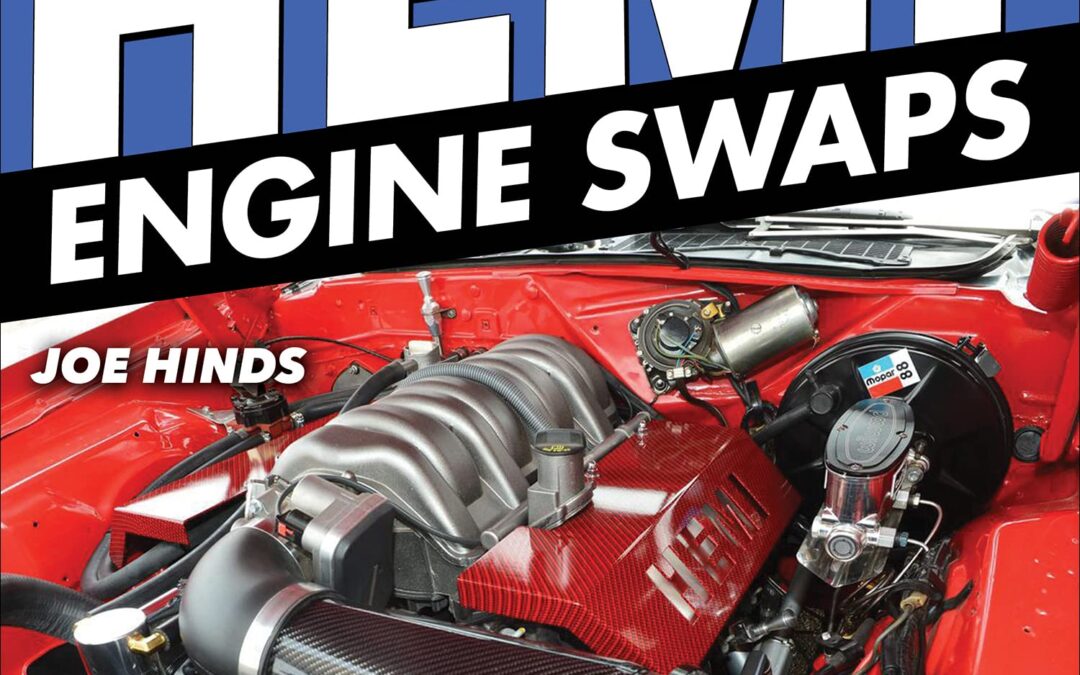
Have you made plans for a new Hemi swap into your classic car? Maybe you’re just curious about the process and want to know how much work is involved. Either way, New Hemi Engine Swaps: How to Swap 5.7L, 6.1L, 6.4L, and Hellcat Engines into Almost Anything has you covered!
Even casual enthusiasts are aware of how many people are swapping modern technology into vintage chassis. Successful LS swaps have been common for more than a decade. They seem to be everywhere among GM enthusiasts.
On the Mopar side, the new Hemi platform is now 20 years old, so plenty of salvage-yard cores are available. With the introduction of the new Hellcat in 2015 (as well as a more robust crate-engine program in recent years directly from Mopar), aftermarket manufacturers have recently seen the wisdom of making peripherals and parts to simplify the process of this swap. Suddenly, swapping a crate Hemi seems as achievable as an LS swap.
In New Hemi Engine Swaps: How to Swap 5.7L, 6.1L, 6.4L, and Hellcat Engines into Almost Anything, expert Joseph Hinds guides you through the process of turning your vintage ride into a modern street machine. The essentials are covered, including engine mounts, transmission cross members, headers that actually fit, and solutions for other common issues. Also covered are fuel-supply items (pumps and tanks) and engine-compatibility concerns (oil filter locations and oil-pan accommodations). Finally, the biggest concerns for most are the wiring, modern power train control modules (PCMs), computer controls, and fuel injection, all of which are covered here as well. There are even step-by-step instructions to fit a modern Hemi into an early-1970s-era Duster as well as a feature about programming aftermarket electronic fuel-injection (EFI) systems.
Now that the degree of difficulty in performing these swaps no longer requires a degree in computer science with welding certifications on the side, many are looking at their vintage Mopars in a new light. Whether you want to do this yourself, farm it out to a professional, or if you are just curious about how it is done, this is the guide for you.
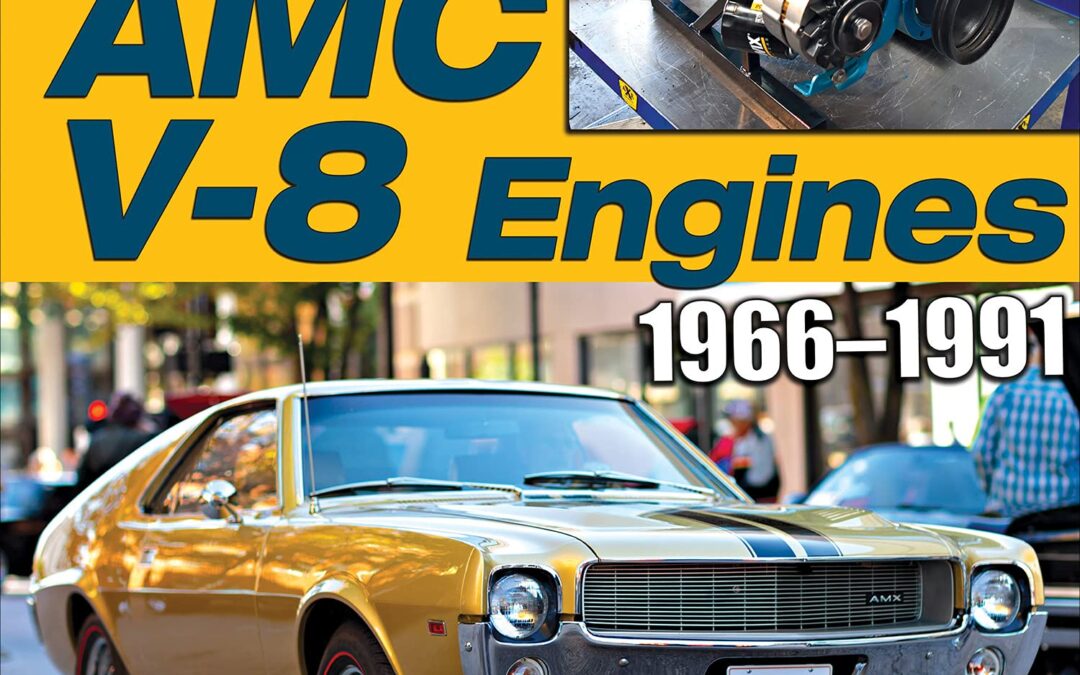
Rebuild your American Motors Corporation (AMC) V-8 engine with help and guidance from Don’s Auto Parts & Machine Shop located in Kenosha, Wisconsin, the home of American Motors!
The AMC Gen II and Gen III V-8 family consists of 290-, 304-, 343-, 360-, 390-, and 401-ci engines. Manufactured in Kenosha, Wisconsin, these engines reside between the fenders of classic cars (such as the AMC Javelin, AMX, Gremlin, AMC Rebel Machine, Matador, and Rambler and SC/Rambler) as well as Jeep CJs and full-size Jeeps.
If this is your first time rebuilding an AMC engine, this book contains detailed photos and instructions starting with disassembling your engine and determining what machining will be needed. All of the fine details about boring and honing, crankshaft grinding, balancing, cylinder head rebuilding, engine assembly, oil modifications, and performance upgrades are detailed with photos. Many of the specialized machining steps that are needed for a performance build that your local machine shop might not know about are included in this book.
AMC V-8 Engines: Rebuild & Modify not only shows the steps of a rebuild in detail but it also helps you determine what kind of build is right for your project. It will assist you in making the correct decisions on compression ratio, camshaft selection and what performance parts are needed. Many engine replacement parts are getting hard to find, so this book reveals some of the aftermarket and restoration companies that specialize in remaking AMC engine parts. Items like camshafts, forged pistons, connecting rods, and cylinder head manufacturers are covered.
Get ready to rebuild your AMC V-8. We look forward to helping you along the way!
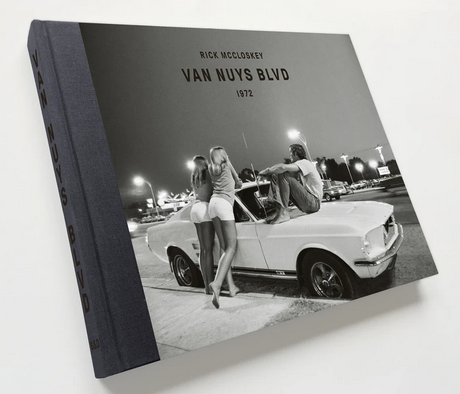
Limited Edition Re-Print
AMERICAN CAR CULTURE AT ITS VIBRANT BEST
Wednesday night was “Cruise Night” in the San Fernando Valley, a suburb of Los Angeles. The stretch on Van Nuys Boulevard between Ventura Boulevard on the southern end, and well past Sherman Way to the north, teemed with kids and cars from all over Southern California on Wednesday nights. It was a terrific place to both see and be seen, and to show off your ride as well.Gas was cheap, times were great, and the boulevard hummed with life during the evenings. Even the «draft» during the Vietnam War did not dampen the street scene. By 1972, the year Rick McCloskey went to Van Nuys to shoot his series of photographs, the culture on the boulevard had become an amalgamation of divergent lifestyles, automobiles – used and new – and some very different «looks» and styles. There were «tribes» of van kids – surfers mostly – low-riders, muscle cars, street racers, Volkswagen owners, and many more, and of course, thousands of young people. The idea of «retro» had arrived as well, with some young people emulating the look and style of the 1950s. Of course, there were individuals who had to be there for work. In making these images, Rick McCloskey set about portraying the young people, their cars, and the iconic background settings. Today, young people no longer have anything similar to the past boulevard gathering places, where so many people can enjoy «just being there» together. Akin to starlight still trickling in from a long vanished world, these photographic images are what we have left
Hardcover
132 pages,
118 duotone plates with a text by the photographer

Simple methods of measuring engine, suspension, brakes and aerodynamic performance gains (SpeedPro Series)
Optimising Car Performance Modifications is a highly practical and useful book that covers brilliant techniques to take the guesswork out of performance modification.
Using just some low-cost tools, you can easily measure the flow restriction of your car’s intake and exhaust. It’s like having a huge flow-bench always available. By making some simple on-road measurements, you can plot the shape of the engine’s power and torque curves – no dyno needed. This allows you to not only see if performance modifications to the engine are improving power, but also see where in the rev range those changes are occurring. Assess the worth of cams, a larger turbo, changed boost control or altered engine management mapping.
But the book doesn’t stop there – it also shows you how to measure your car’s aerodynamics, seeing if at speed your car is developing lift or downforce. Want to make a rear wing work well? Test the angle at which downforce is greatest. You can also test the aerodynamic airflow through oil coolers, intercoolers and radiators.
Interested in improving your suspension? By using a low-cost app and a smartphone, you can accurately measure suspension behaviour.
If you want a practical, hands-on book that will immediately save you money, show where modifications are most needed, and can be used to assess performance outcomes, this is the book for you.
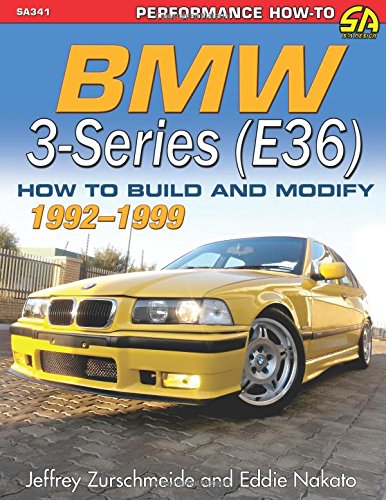
The E36 was the embodiment of the luxury sports sedan, and the standard that other manufacturers strived to reach. And as such, the BMW 3 Series became wildly popular with BMW manufacturing 2.67 million E36 cars worldwide from 1992 to 1999. The new E36 featured a more aerodynamic design, potent dual overhead cam engine, multilink rear suspension, and a more luxurious interior than its predecessor.
The E36 BMW seamlessly blended exhilarating performance with refined appointments and produced a comfortable yet aggressive driving machine that appealed to a wide audience. Although the stock BMW is a more-than-capable sports sedan, veteran author Jeffrey Zurschmeide delves into all the different methods for extracting more performance, so you can make your E36 even more potent. He explains how to upgrade handling and control through installation of aftermarket coil-over springs, bushings, sway bars, and larger brakes. Producing more power is also a priority, so he shows you how to install and set up a cold-air intake, ignition tuners, and exhaust system components. You are also guided through work on cylinder heads, cams, and pistons. In addition, you’re shown the right way to install superchargers and turbo kits. If your 3 Series is making more power, then you need to get that power to the ground; guidance is provided for upgrading the transmission and limited-slip differentials.
The BMW 3 Series has set the benchmark for performance and luxury. But even at this benchmark, these cars can be dramatically improved. Each major component group of the car can be modified or upgraded for more performance, so you can build a better car that’s balanced and refined. If you want to make your E36 a quicker, better handling, and more capable driving machine, this book is your indispensable guide for making it a reality.

Without a doubt, camshafts and the engine valvetrains are the most misunderstood areas of engine performance and have been for a long time. Misinformation is continually passed down from generation to generation, from Grandpa’s “3/4 race cam” to countertop myths at the local speed shop.
Since camshaft selection is vital to making real horsepower, improper selection and tuning has cost horsepower junkies real power for decades. Finally, help is on the way!
Graham Hansen, author of the best-selling SA Design title How To Build Big-Inch Chevy Small Blocks, takes the mystery out of camshaft and valvetrain function, selection, and design. He covers camshaft basics, including a thorough explanation of how a cam operates in conjunction with the rest of the engine and valvetrain. He discusses technical terms like overlap, lobe centerline, duration, lift, and cam profiling. Comparisons between roller and flat-tappet cams are addressed and analyzed.
This book covers rocker arms, lifters, valves, valvesprings, retainers, guideplates, pushrods, and cam drives, as well as detailed information on how to degree a cam and choose the proper cam for your application. Finally, matching cams to cylinder heads, analyzing port flow, and proving it all through dyno tests round out this informative volume.
This book is a must-have for anyone trying to squeeze all the available horsepower from the ever-popular small-block Chevy.

Whether it’s a new Formula One V10 wailing at almost 20,000rpm or the metallic howl of a classic V12, there is nothing on earth like the sound of a racing car at full speed – and if it’s a bright red Ferrari screaming by flat-out, then so much the better.
“Red Noise” has been produced by broadcast audio specialists to bring those sounds right into your living room, your car or your stereo headphones. It utilises incredible recordings made in areas that the general public can never hope to reach….with microphones mounted on the trackside guard rails, and even from right inside the famous Monaco tunnel!
Listen to the sounds of Ferraris, Maseratis and Alfa Romeos spanning more than 75 years of motor racing history and featuring the world’s most famous Grand Prix cars.
This is a genuinely unique aural experience, so push the ‘play’ button, close your eyes and let your imagination and “Red Noise” take you right to the trackside.
Ferraris – Old and New1. See Red, Hear Red! The Vintage Sports Car Club stages an annual meeting at Donington Park that is themed around Italian racing cars. ‘See Red’ is the name of the VSCC meeting and we went there to give you the chance to ‘Hear Red’ ! First there’s the harsh engine notes of a 1980 Ferrari 312T5 ‘flat-12’ (a car actually driven by Gilles Villeneuve!) This is followed by an ex-Michael Schumacher team car from 2002 which we hear idling, picking up the revs, warming up, then finally pulling out of the pits with that distinctive V10 howl.
2. Monaco Ferrari Parade There was a fantastic gathering of Ferraris at the Monaco Historic Grand Prix in 2004. We were there to record all those incredible sounds! Cars ranged from the very first Type 125 1500cc supercharged GP car as driven by Alberto Ascari to a 21st-century Schumacher V10. In fact, there were no less than five vee-tens on hand – two Eddie Irvine cars from 1997 and three Schumacher cars from 1998/99 and 2000.
3. Picking up the Pace More from La Piscine as the real demonstration got under way and the cars picked up to racing speeds. No wonder the Italian commentator was getting excited!
4. Old and New in Action Old and new cars take La Piscine en masse. The field includes both four-cylinder and V12 cars from the ‘fifties, a 3-litre Type 312 V12 from 1968 and no less than seven Type 312 flat-twelve ‘boxer’ engine cars. From more recent times there were V12s as driven by Michele Alboreto in 1987, Nigel Mansell in 1990 and Alain Prost in 1991. And last, but very far from least, were the five Irvine and Schumacher vee-tens! They all mean music to the ears of the ‘Ferraristi’….
5. More from Monaco More ‘red noise’ from the Monaco 2004 Ferrari tribute high-speed demonstration laps. Similar to the previous tracks but too good to waste – especially as we were recording with microphones actually right on the Monaco trackside guard rails!
6. Flat-Out Red! And now for a change of recording point – here are Ferraris- old and new – passing at speed on the Monaco start/finish straight.
7. Generations Apart A 1999 ex-Schumacher Ferrari V10 takes La Piscine in conjunction with a rear-engined Ferrari 246 ‘Dino’ V6 that Italy’s Lorenzo Bandini took to second place here at Monaco in 1966. Then comes a 2.5 litre Ferrari Type 625 – the car that Frenchman, Maurice Trintignant, won Monaco with in 1955. The old front-engined ‘four’ takes La Piscine in conjunction with another modern Ferrari V10.
8. The Ferrari Type 312 V12 Sit back and listen to the first Ferrari Type 312 warming up and blasting through the Monaco tunnel.
9. Jackie Ickx Remembers Belgian Grand Prix and Le Mans star, Jackie Ickx, was a young Ferrari driver in the early nineteen-seventies. He remembers those times for us and tells us what it was like to race at Monaco back then.
10. Flat-Twelve Ferraris Not until Ferrari re-designed its 3-litre V12 did they start scoring World Championship successes again. It powered Niki Lauda to world titles in 1975 and 1977, as well as Jody Scheckter in 1979. The engine had a distinctly harsh note. We hear it warming up at Monaco, then making several echoing passes through the Monaco tunnel and, finally, negotiating the La Piscine sequence of tight turns.
11. The ‘Other Flat-Twelve’ There was another ‘flat-twelve’ built in Italy during the seventies, this one by the Alfa Romeo team in Milan. This is what that car would have sounded like back then, warming up and then blasting off, flat-out.
12. The Last F1 Vee-Twelves Ferrari stuck with V12 engine power right through the mid-nineties with Frenchman, Jean Alesi and Austria’s Gerhardt Berger driving the Type 412 team cars until the end of the 1995 season. By then, it was obvious that the V10 layout was definitely the most efficient of all of the Formula One options. Even so, the heavier, longer V12 took the 412 to a number of GP wins – and it sounded great in the process!
13. Into the 21st Century This is the unmistakable sound of V10-powered Ferraris howling by our microphones on the trackside barriers. First we hear some individual passes, then a whole group of vee-tens finish the track. These are all cars driven by either Michael Schumacher or Eddie Irvine between 1997 and 2000.
Maserati from Modena
14. Vintage Red Maserati is one of the oldest names in motorsport. Listen to a couple of vintage Maserati racers warming up – a four-cylinder 4CLM from 1939 and a six-cylinder 6CM from the 1937 season. These supercharged 1500cc cars would have raced in the ‘voiturette’ class – the nineteen-thirties equivalent of the Formula Two (or GP2) category.
15. A Fifties Favourite The six-cylinder Maserati 250F was one of the favourite 2.5 litre Formula One cars of the fifties – both with the fans and with its drivers. Listen to a group of them fire up, pull out of pits and then pass by on a flying lap.
16. Maseratis En Masse! A full field of twenty cars in a ‘Maserati-only’ race at the Vintage Sports Car Club’s ‘See Red’ event at Donington Park. They range from pre-war four, six and eight-cylinder supercharged cars to a whole pack of what is one of the most-admired Grand Prix cars of all time, the six-cylinder Maserati 250F. Hear them on the parade lap, and in race action through Redgate Corner.
17. Maserati at Monaco The throaty sound of a six-cylinder Maserati 250F as it warms up, followed by the rumble and the roar of a full field of ‘fifties Formula One cars on their warm-up lap.
18. Monaco Shark Hunt! The three-pronged trident is famous as the weapon of Neptune, or Poseidon – the God of the Sea and it has also always been the emblem of Maserati. So it’s perhaps appropriate that we hear a pack of 250F Maseratis chasing a Ferrari Type 555 ‘Squalo’ – or ‘Shark’ through the tight left-hander before Monaco’s Rascasse hairpin.
19. GP Rivals Warm Up A Bugatti Type 35 warms up in the Monaco pits. It carries the racing blue of France where the cars were built. Then an Alfa Romeo P3 is push-started into life and joins the mechanical chorus.
20. Right on the Rail! A full field of more than thirty great cars of ‘the golden age’ rumble around on a warm-up lap, take the start and attack the opening laps of a race around the Monaco streets. You are right up with the action thanks to our stereo microphones positioned right on the trackside safety barriers.
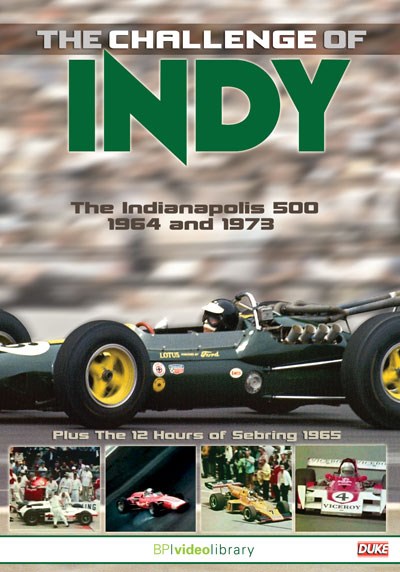
Race fans – Start your Engines and get ready to experience The Challenge of Indy!
The Indianapolis 500 is one of the greatest motorsport events, providing a unique challenge for driver, machine and team on the high-speed banked oval at the world-famous Brickyard. This DVD features two action-packed archive films charting races which are etched into the memories of US motorsport fans – although for very different reasons.
We open with the 1964 Indy 500, following practice, qualifying and the race as the established American stars battle to hold off a European invasion led by Formula One star Jim Clark and his Ford-powered, Colin Chapman-designed Lotus. The rear-engined Lotus was on the verge of revolutionising American motorsport forever, with Clark nudging the track record up towards 160mph. This would be the final year of domination for the front-engined machines of US greats like A.J. Foyt and Parnelli Jones, and what a last year! The thrilling action footage captures the slides, crashes, spins and wheel-to-wheel dicing as Foyt laps the entire field in his Sheraton Thompson Special. It was a moment of motorsport history, but as this classic film shows, it was also a full-throttle race.
Fast forward almost a decade for our second film, Going to Extremes. This is the story of the bizarre 1973 Indianapolis 500, which took three days to run and even then didn’t go the full distance. Once again we are treated to practice and the gripping drama of making the cut in qualifying before turning our attention to race day. Among the stars lining up are legends like Foyt, Mario Andretti, Al Unser and Bobby Unser – and with the first 200mph lap in sight, there is the prospect of a great Indy 500. However, what should have been a great race turned into three frustrating days of waiting before the fans were able to enjoy a single green flag lap. When the racing did get under way, it was breathtaking, and out superb archive footage brings you all the action.
There’s also a chance to enjoy another classic American motorsport event, the 12 Hours of Sebring. The film 12 Hour Grind takes us back to the rain-hit 1965 running of this classic sports car race, which sees Dan Gurney, Graham Hill, Paddy Hopkirk, Ritchie Ginther and many more stars doing battle in a variety of roaring racing machines, including Ford GT40s, AC Cobras and stunning Chaparrals.
“If you can’t wait for May’s Indy 500, relive the event’s glory days with this DVD. It covers great races from 1964 and 1973 from the infamous Brickyard, with footage of Brits like Jim Clark, Graham Hill and Paddy Hopkirk, but strangely the rain-hit 1965 Sebring 12 Hours race is a bonus feature” Auto Express
“This DVD captures the best footage from two of the greatest races ever held at the famed Brickyard, plus bonus footage from the 1965 12 hours of Sebring. the 1964 Indy 500 was the last year a front-engined car won the race, and the bizarre 1973 Indy 500 took three days to run and didn’t even go the full distance. Watch the full story, from practice to the chequered flag, of these spectacular events” Autocar
“With colour films of practice for the ’64 and ’73 500 miles, and bonus material covering the run-up to the ’65 Sebring 12 Hours, there’s plenty to enjoy here. We loved the footage of Pole Day at the Brickyard in ’64, where ‘James Clark Jr’ took the fight to the roadsters. Great to see Smokey Yunick’s Hurst Floor Shift Special, too”

Suddenly, everyone wants one of those old dirt bikes from back in the day. Knobby tires, small two-cycle engines, four-speed transmission, and a full four inches of suspension travel. Those are the bikes that most baby boomers grew up on; the ones that young men rode into the ground and left to rot where ever they last fell.
But no more. Now, those simple little Hondas, Yamahas, Harleys, and Pentons are making their way from the back of the garage to the front. From the barn to the shop. The shop where patient mechanics and enthusiasts are stripping them down and bringing them back to life.
The questions for the prospective buyer is: What to bring home? Among the thousands and thousands of dirt bikes, scramblers, trials bikes, play bikes and early motocross bikes, which are the best bikes to make your own?
Vintage Dirt Bikes will help the reader make that decision by providing information on all the most popular makes. For each bike, this new book provides four to six paragraphs describing the bike in general terms. In addition, bullet points for each model include the following information: Relative cost to acquire, value when finished, and which are most likely to offer the most fun for the money. Readers will also find what to look for when checking the condition of items such as paint, suspension, frame, and engine.
A general section at the back of the book will offer the reader help deciding where to buy classic bikes, where to get parts, who to call for help, and which parts of the restoration should be farmed out to experts with specific skills.
Autobooks-Aerobooks 2900 W. Magnolia Blvd. Burbank, CA 91505 (818) 845-0707 Hours: Tuesday-Friday 10:00 AM – 6:00 PM Saturday 10:00 AM – 6:00 PM Closed Sunday and Monday Accept Credit Cards gift cardYES, We have Gift Cards - Click Here AUTOBOOKS IS OPEN...
Autobooks-Aerobooks 2900 W. Magnolia Blvd. Burbank, CA 91505 (818) 845-0707 Hours: Tuesday-Friday 10:00 AM – 6:00 PM Saturday 9:00 AM – 6:00 PM "Cars & Coffee" on Saturday morning! Closed Sunday and Monday Accept Credit Cards YES, We have Gift Cards - Click Here Terms...





